Search Papers
33 papers
Suggestions for training strategy of Thu Dau Mot University in the process of approaching industrial revolution 4.0
Trinh Phuong Thao
Industrial Revolution 4.0 has become an indispensable trend in the development process of Vietnam and is increasingly applied in university education. The essence of the Industrial Revolution 4.0 is the application of technology, data science and the use of artificial intelligence for production and human life. In this impact, modern education, especially higher education, is the field most affected. Online teaching, with tools to support the teaching of the digital age, has been changing dramatically in the teaching and learning situation in universities, helping to modernize education and integrate with the world, but there are many issues that teachers and managers must consider to change teaching methods and training strategies, in order to deliver the best results. Starting from the actual situation, we propose specific and comprehensive measures to improve the teaching efficiency of Thu Dau Mot University and, to meet the needs of Vietnamese society and the development of Industrial Revolution 4.0.
The Shift in historical perception from tradition to modern in Viet Nam in the early twentieth century
Vũ Thị Thu Thanh
In the late nineteenth and early twentieth century, the intelligentsia of the colonial countries and ones being threatened by Western colonial dominance in Asia began to re-perceive the problems of sovereignty, nation-state, and re-ask questions like "What is history for?" as well as review what previous historians wrote about their national history. From re-realizing history and rewriting history according to new perspectives, historiography in these countries has shifted from "traditional" to "modern" with taking Western science as the main direction. Vietnamese historiography is also not out of that general change. Examining the product of historical books at the beginning of the twentieth century, Phan Boi Chau is considered as the pioneer historian for that historiographical turn. The article focuses on analyzing the new historical viewpoints of Phan Boi Chau from the global perspective of the flow of thought in Asian countries at that time.
A study about the sustainable challenges of extended areas in Taiwan and lessons for Ho Chi Minh, Dong Nai and Binh Duong regions
Tran Dinh Hieu, Nguyen Hong Giang
This paper examines the main challenges of the processes of space and social policy change present to current urbanization trends of Taiwan. The chapter argues that one of the main challenges is economic growth, increasing integration into the global economy and making Taiwan competitive in the global economy. This process leads to the growth of large urban regions that present many challenges to the urban development in the future. In particular, the paper focuses on the most fragile areas of the extended urban spaces are the rural and urban margins, where urban activities are expanding into densely populated agricultural regions. It is argued that in these areas, local policies should be developed that adapt to local ecosystems. The paper presents lessons of interventions in this field for Ho Chi Minh, Dong Nai and Binh Duong Region for urban expansion.
Research factors impact on customer satisfaction in Vietnam restaurants
Le Huu Khanh, Trieu Thi My Hanh
Along with changes in Economy, Tourism and the influence of foreign waves, the market of Food Service in Vietnam has also changed to meet the needs of customers. At many restaurants in Vietnam, customer satisfaction can greatly affect restaurant revenue. Therefore, it is essential to determine which perceived quality factors affect customer satisfaction. The survey was conducted through questionnaires collected from 329 respondents, who experienced in restaurant services in Vietnam. In this paper, four factors are found that have influence on customer satisfaction in restaurants: Service quality, Product quality, Environment and Price. In addition, the research also gives some contributions based on the research results, helping businesses understand customers and meet customer satisfaction requirements in the restaurant.
Leveraging the Youth to A Sustainable Development: A Case Study on A2i Innovation Lab
Tasnia Mahin Rafa, Dola kar, Nargis Islam, Mohammad Osman Gani
Youth in a nation is the most viable and potential human resource in both demographic and social structure. Without the youth's adequate and integrated bio-social development a nation cannot attain its anticipated human goals. Based on government initiative a2i, the empowerment of youth towards sustainable development in Bangladesh is described in this paper. Although the Bangladesh Government has formulated and implemented policies, plans and programs for youth welfare are still through GOs and NGOs. Related literature indicates that, regardless of all age and regions, young people in this country face several socio-cultural problems where they cannot grow and empower themselves adequately. As a result, they cannot play their important roles in sustainable development and changes within the country. To resolve the problems of the youth in relation to their development and empowerment, the Government of Bangladesh is developing and implementing some solutions. The case study focuses on the role of a2i for development of youth in the successful design of public development and sustainable development programs.
An Overview of Emerging Technologies for 5G: Full-Duplex Relaying Cognitive Radio Networks, Device-to-Device Communications and Cell-free Massive MIMO
Doan Xuan Toan, Thanh Quoc Trinh
The fifth generation (5G) cellular network has been commercialized recently to fulfill the new demands such as very high data exchange rate, extra low latency and high reliability. Many new technologies have been introduced and exploited since the early of the 2010s. Among these emerging technologies, full-duplex relaying cognitive radio networks, device-to-device communications and cell-free massive multiple-input and multiple-output have been considered as promising technologies/systems for 5G and beyond. This work provides a comprehensive study on the concepts, advantages and challenges of the above-mentioned technologies. In addition, we also introduce four new research directions which are challenges of 5G and beyond.
Innovative Techniques and the Integrated Model of Teaching the First Accounting Course for English as Second Language learners
Mary Precy Aguilar-Lego
Across the world, the first accounting course provides serious challenges for teaching. These arise from powerful negative perceptions which include the anxiety associated with tertiary-level study and the differing backgrounds or majors of students required to take the course. This paper outlines some examples of nontraditional teaching techniques and highlights how the course could be best structured to overcome such negative views while at the same time responding to the changes in the industry. The design and content of the proposed course emphasizes the USER approach and is directed to English as second language learners. This is a case study in an Australian offshore campus and is the end result of the progressive improvement in the structure and delivery of the course.
The Southeast of Vietnam as a cultural zone and roles of culture - people in the sustainable development of the region
Trần Ngọc Thêm
The Southeast plays a very important role in Vietnam’s economic development. Despite a high concentration of social scientists in the Southeast region, there remains a paradox that the Southeast culture has not been sufficiently researched into. Applying the method of cultural zoning based on the changes of the three dimensions Subject – Space - Time developed by the author, the article concludes that the Southeast is a separate cultural zone besides the Southwest and lists some typical characteristics of the Southeast in terms of cultural elements (focusing on the organizational culture) and the system of cultural personality characteristics of Vietnamese people in the Southeast. An analysis of the Human Development Index (HDI) of the Southeast shows that this development is unbalanced and unsustainable. To achieve balance and sustainability, more investment must be made on the culture and the people; community-village type behaviors should be replaced by community-society type behaviors; and the urban way of living, the urban culture and good urban citizen character should be promoed while limiting the rural/agricultural lifestyle and characteristics.
Occupation-based social structure in Binh Duong Province, 1999-2009
Prof. Bui The Cuong, Vũ Mạnh Lợi
Binh Duong has rapidly transformed during the period 1999-2009, from a agricultural province to industrial one. The paper explores the shift of occupation-based social structure of Binh Duong during that period. Using the data sets of Census 1999 and 2009, the paper analyses the evolution of the occupational figure in Binh Duong by ten occupational categories and four occupational strata, and the differences in this figure by residence, gender, ethnic, and religious variables. Findings show that the occupational structure of Binh Duong is more developed than the one of the Southern Key Economic Zone. Its change in rural areas is more significant than in urban areas. There are not considerable differences by gender, ethnicity, and religiousness. The findings are suggestive for a further analysis using the data set of Census 2019 on the evolution of occupational figures in Binh Duong during the previous twenty years (1999-2019).
Publication Information
Publisher
Thu Dau Mot University, Viet Nam
Editor-in-Chief
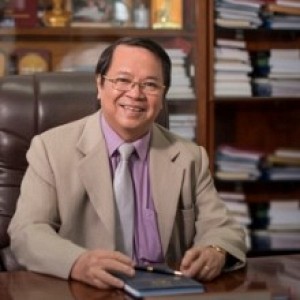
Assoc. Prof. Nguyen Van Hiep
Thu Dau Mot University
Thu Dau Mot University
Editorial Board
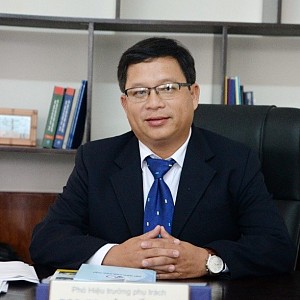
Assoc. Prof. Le Tuan Anh
Thu Dau Mot University
Thu Dau Mot University

PhD. Nguyen Quoc Cuong
Thu Dau Mot University
Thu Dau Mot University

PhD. Doan Ngoc Xuan
Thu Dau Mot University
Thu Dau Mot University

PhD. Nguyen Khoa Truong An
Thu Dau Mot University
Thu Dau Mot University
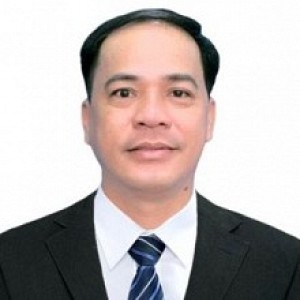
Assoc. Prof. Nguyen Thanh Binh
Thu Dau Mot University
Thu Dau Mot University
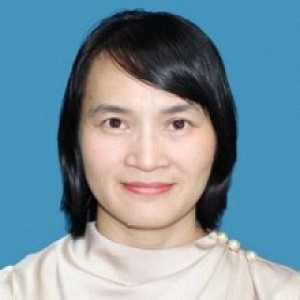
PhD. Le Thi Thuy Dung
Thu Dau Mot University
Thu Dau Mot University

PhD. Ngo Hong Diep
Thu Dau Mot University
Thu Dau Mot University
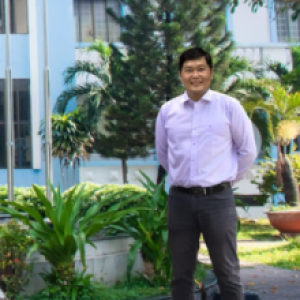
PhD. Nguyen Duc Dat Duc
Ho Chi Minh City University of Industry and Trade
Ho Chi Minh City University of Industry and Trade
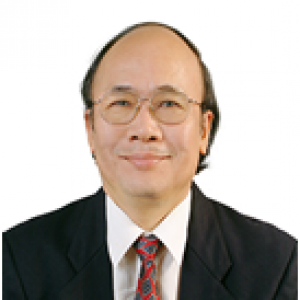
Assoc. Prof. Nguyen Van Duc
Animal Husbandry Association of Vietnam
Animal Husbandry Association of Vietnam

PhD. Nguyen Thi Nhat Hang
Department of Education and Training of Binh Duong Province
Department of Education and Training of Binh Duong Province

PhD. Nguyen Thi Cam Le
Vietnam Aviation Academy
Vietnam Aviation Academy

PhD. Trần Hạnh Minh Phương
Thu Dau Mot University
Thu Dau Mot University
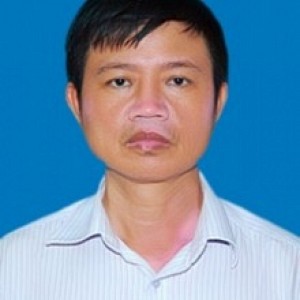
M.A. Pham Van Thinh
Thu Dau Mot University
Thu Dau Mot University

PhD. Nguyen Thi Lien Thuong
Thu Dau Mot University
Thu Dau Mot University
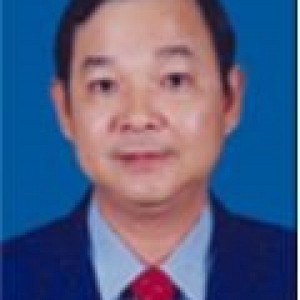
Prof. Le Quang Tri
Can Tho University
Can Tho University
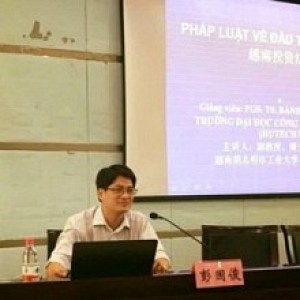
Prof. Banh Quoc Tuan
Thu Dau Mot University
Thu Dau Mot University

